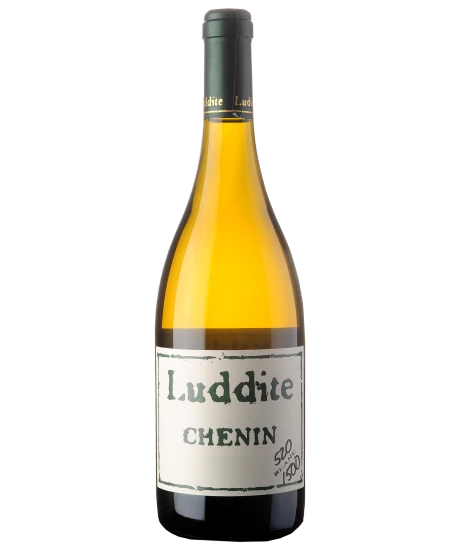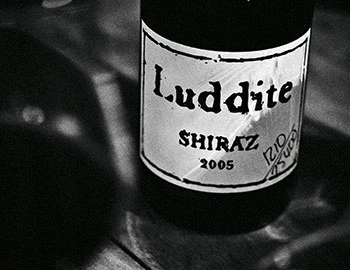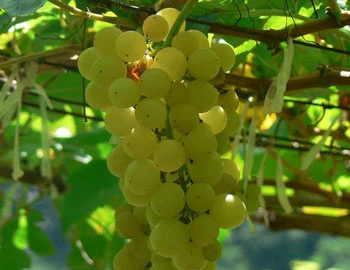
Chenin Blanc 2022
WO Luddite, Luddite Wines, 750 ml

| Grape variety: | Chenin Blanc |
| Producer: | Luddite Wines / Fam. Verburg & Meyer |
| Origin: | South Africa / Coastal Region / Bot River |
Description
How does a Chenin Blanc from South Africa from a charming winemaking couple like Penny and Niels Verburg taste when their signature style is ‘orange wine’ and little use of technology? This Chenin Blanc provides the answer in the glass! Aromas of greenish pineapple, Granny Smith, thyme and lemon balm unfold on the nose. The palate is noticeably phenolic, powerful and delicately savoury. The flavours are reminiscent of Mediterranean herbs, salted lemon, wet stone and carambola. Each bottle of this small edition has been numbered by hand. A brilliant accompaniment to fish dishes and saltimbocca with plenty of sage. A wine full of character that deserves a large glass. (SiKl)
Attributes
| Origin: | South Africa / Coastal Region / Bot River |
| Grape variety: | Chenin Blanc |
| Ripening potential: | 4 to 10 years |
| Drinking temperature: | 16 to 18 °C |
| Food Pairing: | Grilled fish, Saltimbocca, Hot vegetable curries |
| Vinification: | fermentation at low temperatures, fermentation in steel tank, Pumping over, cooling period |
| Harvest: | hand-picking |
| Maturation: | in partly new and used barriques/ Pièces |
| Bottling: | filtration |
| Maturation duration: | 12 months |
| Volume: | 12.0 % |
| Note: | Contains sulphites |
Luddite Wines / Fam. Verburg & Meyer
Niels Verburg is one of those people who you immediately want to befriend. With his imposing stature and beaming smile, he stands out and magically draws people in.
At an early age, while he was working in Australia, he realised that Shiraz was "his" grape. In Chile, he later found the inspiration for the way he wanted to make his wine.
Together with his wife Penny, he planted his first vines in 1996. The first vintage was pressed in 2000. The small winery with just 6 hectares of vines is located just outside the village of Bot River. Walker Bay is only 30 kilometres away. The mild Mediterranean climate from the nearby ocean gives the vines on the south-western slopes of the Houw Hoek mountains a slow and long growing period. This results in spicy Shiraz with elegant fruit sweetness.
The name of the vineyard refers to the Luddites, 19th century English textile workers who fought against the Industrial Revolution. Consequently, Niels is rather reluctant to use "technology", as he says in a humorous way, both when caring for the vineyards and working in the cellar. Vinification involves as little intervention as possible, if any.
Niels and Penny have fulfilled their dream. In addition to the vines, there are also some olive trees and a few lucky pigs are reared: a rural idyll in South Africa. They epitomize the great change occurring in South Africa since the 1990s: moving away from mass production and towards independent quality wines that do not fear comparison with top international wines.

Chenin Blanc
Small area, great variety
The Chenin blanc now grows on just one percent of French vineyards. But its wines are immensely diverse. The homeland of this grape is the Loire Valley. There it muscles into the light-footed frothers of Saumur and Vouvray. The vintners of Bonnezeaux and Quarts-de-Chaume process them into beguilingly sweet wines. And in Savennières it yields dry whites with mineral cores and great aging potential. They smell of apple, honey and fresh straw, and show great body and a stimulating acidity. The world's largest area of Chenin blanc is in South Africa, where it landed in the mid-17th century with Dutch traders. The most exciting wines result from old vines drawn from traditional bush forms.


